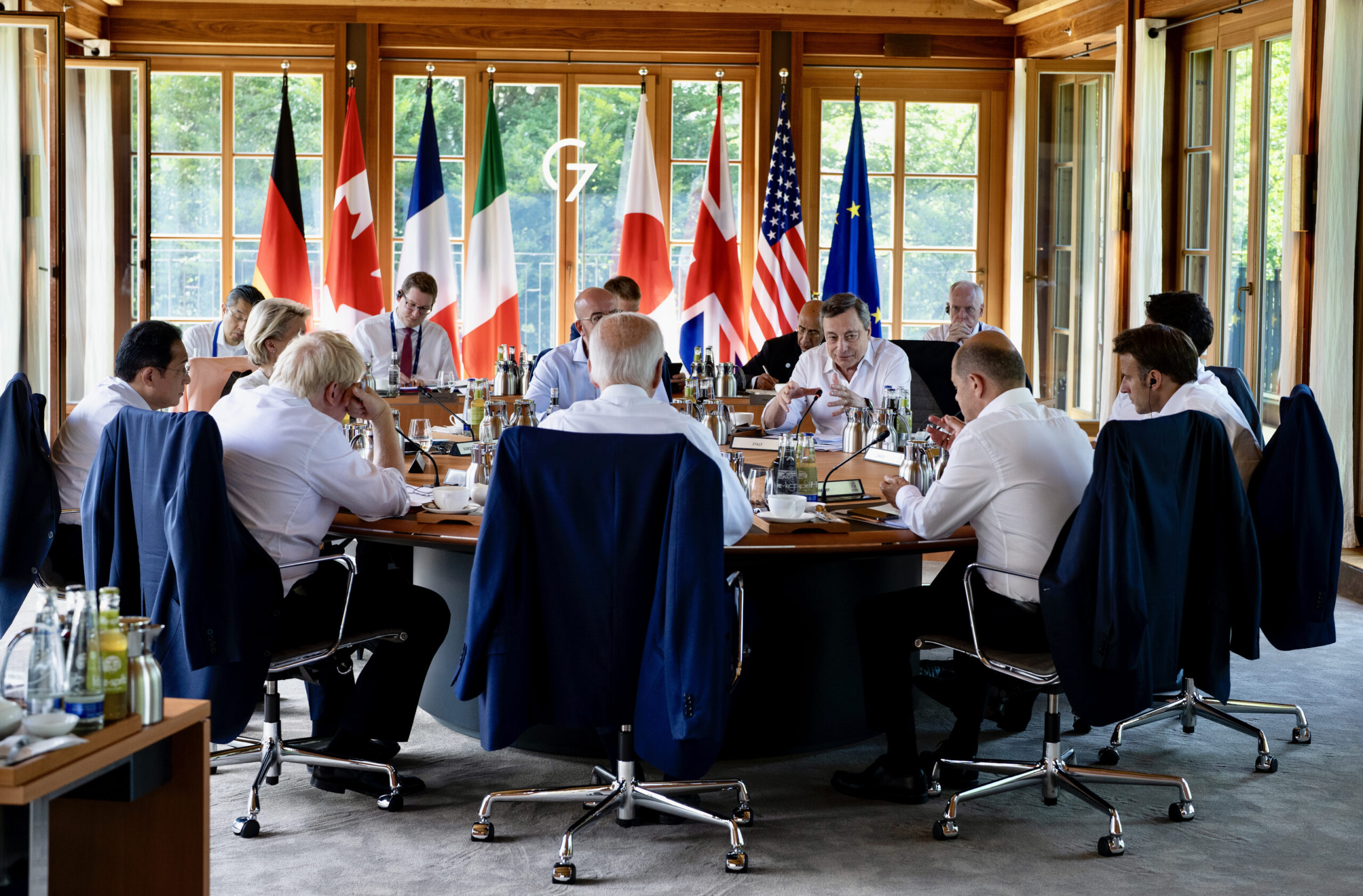Thus the G7 will counter the New Silk Road

G7 members presented a new partnership on infrastructure in developing countries. The aim is to offer an alternative to the New Chinese Silk Road. The role of American companies in Biden's plans. All the details
On Sunday, the members of the G7 – the group that brings together some of the most economically advanced countries: Canada, France, Germany, Japan, Italy, the United Kingdom and the United States, plus the European Union – announced a partnership on infrastructure and investments in the countries developing. It is called, in fact, Partnership for Global Infrastructure and Investment and aims to raise 600 billion dollars in public and private funds in five years.
The partnership would like to be the response of democracies and the "market" to the Belt and Road Initiative (or New Silk Road), the connectivity scheme launched by China in 2013 to try to expand its political influence in the world through the construction of roads , ports and telecommunication networks.
WHAT ABOUT BUILD BACK BETTER WORLD?
The one announced on Sunday is not a new initiative, in reality, but rather a rebranding of the Build Back Better World , the infrastructure plan presented by American President Joe Biden at the G7 summit in 2021, which explicitly referred to the economic recovery program developed in homeland.
Inflation , aggravated by the Russian invasion of Ukraine, causing the construction costs of various plants and installations to rise, has forced the United States to recalibrate their projects. China has also reduced its spending on the Belt and Road Initiative as it has to deal with internal problems. And the European Union had also developed a connectivity strategy abroad, the Global Gateway , which will now merge into the Partnership for Global Infrastructure and Investment.
FUNDS AND AREAS OF INTERVENTION
The European Union, in fact, wants to allocate 300 billion euros of investments to the G7 program by 2027 (it was the figure foreseen for the Global Gateway). The United States, on the other hand, plans to mobilize up to $ 200 billion in grants, federal funds and private investments. Through the contributions of the remaining members of the group it should reach 600 billion dollars. Biden however anticipated that additional billions could come from banks and development institutions and sovereign wealth funds.
The partnership will focus on four areas: energy security and climate; Health; digital connectivity; gender equity. According to Biden, the G7 initiative will allow recipient countries to gear up for future health and climate crises and digitization. The World Bank, however, had estimated that developing nations have infrastructure needs (roads, hospitals, photovoltaic parks, and so on) of 15 trillion billion from 2015 to 2030.
IT'S NOT CHARITY, SAYS BIDEN
The American president wanted to emphasize that the infrastructure partnership “is not help or charity. It is an investment that will produce returns for everyone – including American citizens – and will boost all of our economies ”.
I want to be clear – the G7's announcement of a new global infrastructure partnership isn't aid or charity. It's an investment that will deliver returns for everyone – including the American people – and boost all of our economies.
– President Biden (@POTUS) June 26, 2022
The clarification is explained by the fact that the United States (and the other members of the G7) will not be able to replicate the financing methods of the Chinese Belt and Road Initiative, which is essentially based on the use of public money for the construction of major works. On the contrary, they will have to focus on mobilizing the private sector: for this reason it is essential to present investments in emerging countries as an opportunity for profit.
OFFER AN OPTION
Through the partnership, developing countries will instead "see the concrete benefits of collaboration with democracies," Biden said. This is an implicit but evident reference to China, which Washington accuses of trapping low-income nations in debt, then forcing them to cede control of strategic assets to Beijing to repay the loans obtained. "We are offering better options."
Similarly, according to European Commission President Ursula von der Leyen, the initiative "shows our developing partners that they have a choice".
According to economic analyst Pete Sweeney , allocating financial aid with good governance and little geopolitics is the best choice, because most emerging governments don't want to choose whether to side with the West or with China.
The non-profit organization Global Citizen reports that, on average, the G7 countries devote only 0.32 per cent of their gross domestic products to development assistance initiatives, less than promised (0.7 per cent ).
INVESTMENTS IN INFRASTRUCTURE, IN CONCRETE
On Sunday, the United States presented some concrete projects that will receive investments under the Partnership for Global Infrastructure. One is a $ 2 billion solar power plant in Angola developed by US firm Sun Africa and backed by the Department of Commerce and the Export-Import Bank. Another concerns the construction of a vaccine production plant in Senegal. Then there is a project to design a small modular nuclear reactor (a new technology ) in Romania: the US government and NuScale Power will provide 14 million. Telecommunications company SubCom will build a submarine Internet cable from Singapore to France, via the Horn of Africa and Egypt. While USAID (the US agency for international development) will invest 40 million for the decarbonisation of power grids in Southeast Asia and to stimulate regional energy trade.
G7 members also say they want to provide economic incentives to emerging nations to dismantle coal plants: the program will start in South Africa, and could be replicated in India, Indonesia, Vietnam and Senegal.
This is a machine translation from Italian language of a post published on Start Magazine at the URL https://www.startmag.it/economia/g7-partnership-infrastrutture/ on Mon, 27 Jun 2022 13:26:18 +0000.
